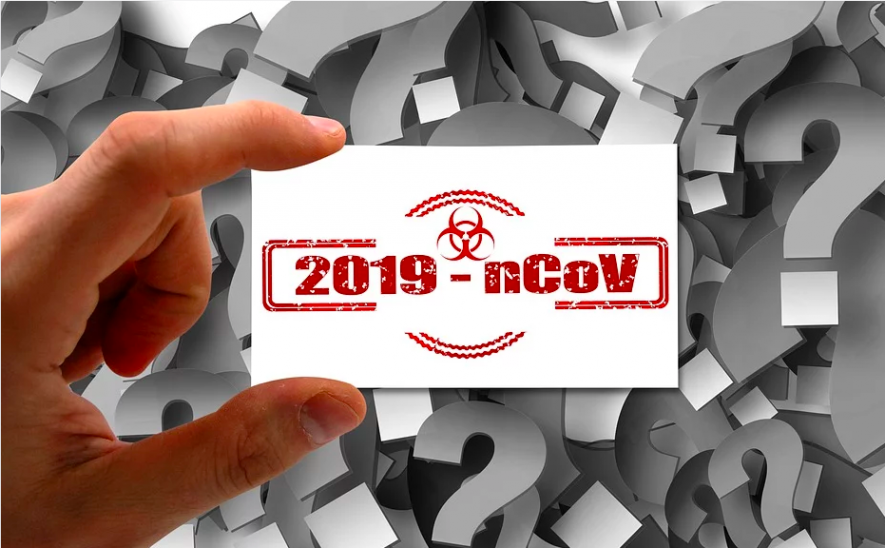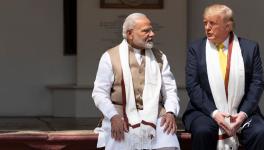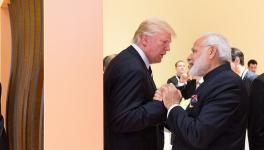2019-nCoV, a New Threat and Exemplary Action by the Chinese Authorities

In two months, the novel coronavirus—or 2019-nCoV—has affected more people than the SARS virus had done in 2002-2003. While it is more infectious than SARS and therefore spreading faster, the infections are less severe: the number of people becoming seriously ill or dying are less than that of SARS. The Chinese authorities have reported 9,692 confirmed case as of 31st January, of which 213 people have died of the disease. The bulk of the infections are from the Hubei province, with Wuhan as the epicentre of the outbreak. India has now seen one confirmed case of nCoV, from a student returning home from Wuhan.
The WHO’s Emergency Committee has now declared the 2019-nCoV as a Public Health Emergency of International Concern (PHEIC). The Committee “welcomed the leadership and political commitment of the very highest levels of Chinese government, their commitment to transparency, and the efforts made to investigate and contain the current outbreak.” They also noted, “China quickly identified the virus and shared its sequence, so that other countries could diagnose it quickly and protect themselves, which has resulted in the rapid development of diagnostic tools.” The Committee also emphasized that the “declaration of a PHEIC should be seen in the spirit of support and appreciation for China, its people, and the actions China has taken.”
The Chinese authorities have indeed acted with extraordinary speed. It is unthinkable to lockdown of the city of the size of Wuhan, with its 11 million population and virtually quarantine the entire province of Hubei with a population of about 60 million; or genome sequence the virus with this speed which they have now made public; or reach diagnostic tests to the health authorities; and mobilise 6,000 medical personnel for Wuhan.
What is a coronavirus? Coronaviruses are a family of virus that infect the respiratory tract. They include the familiar ones such as common cold and influenza, and also the more worrying ones that affect us from time to time, such as SARS, MERS, avian flu, swine flu, and now nCoV. They may cause mild body ache, sneezing, coughing, fever, and in severe cases complications such as pneumonia.
The earlier two similar viruses that have caused serious lung infections are SARS, Severe Acute Respiratory Syndrome, and MERS, the Middle East Respiratory Syndrome. Both these viruses originated from other species and infected humans. SARS was a bat virus, and MERS was infection from camel to humans. Unlike MERS, both SARS and nCoV, while originating from other species, have human to human transmission, making them much more infectious. The nCoV is infectious even when it is incubating in the body and showing no visible symptoms. This means that people who are unaware that they are carrying the infection, can also infect others. This makes controlling the spread difficult.
There have been various theories about the species from which the virus originated as well as the place where this specie jump occurred. Initially, as a cluster of cases had been reported from the sea food market in Wuhan, this was thought to be the place of origin. As this also where a lot of wild animals are sold, it was thought that this virus could be from a snake or a civet.
After the genome sequence has been made public, it is now clear that there are cases that did not originate from the Wuhan market. The virus may have spread, but did not originate from the market. While the first recorded case of the virus is December 2019, the likely date of earliest ancestral version as constructed from the 28 virus sequence the Chinese authorities have made public indicate, is in early November. This would be the date when the first such a mutated virus infected a human being, from which all infections can be traced. The virus is also now being recognised as closest to various bat viruses, and a bat virus is is the most likely original source of nCoV.
What kind of medicines do we have in our repertoire against the nCoV? How quickly can we identify or develop such medicines? How quickly can we develop a vaccine against this virus?
Here is where the great advances we have made in the last few decades come in. First is the speed with which the virus has been sequenced. This was the first step in developing a diagnostic kit and making it widely available. The Chinese authorities are now supplying a large number of such kits for a quick identification of those infected, and isolating them as quickly as possible. The second is testing existing medicines that we have against similar diseases, hoping some of them will work against nCoV as well.
Chinese researchers have found that out of 30 odd antiviral and other drugs, three existing drugs—Remdesivir, Chloroquine and Ritonavir—have fairly good inhibitory effects at the cellular level. This research was jointly conducted by the Chinese Academy of Military Medical Sciences and the Wuhan Institute of Virology (WIV). Of course, moving from laboratory level to actual trials for these medicines is still a big step, but the speed with which this has been done is unthinkable in a different era.
In addition, the Chinese medical authorities are also testing a number of traditional Chinese medicines for therapeutic effects, but no such candidate has yet emerged. This is not surprising, as traditional medicines would work against diseases that are stable, allowing traditional practitioners to gather sufficient empirical knowledge to treat such diseases. If a disease is novel, it would not have seen seen by such practitioners, and therefore unlikely that a traditional medicine would be available against it.
The second line of defence, and in the long run the most important one, is a vaccine. Once the virus is isolated, a vaccine is of course a matter of time. Traditional vaccine development takes almost six months to develop, after which clinical trials can be conducted for evaluating their effectiveness. This time, we have a much more powerful toolkit. Traditional vaccines work using either a much milder form of the disease, or a small snippet of the virus DNA to trigger an immune response in the body. This works to protect us from future infections from the same virus. This time, we also can use a messenger RNA—or mRNA—to produce a protein in the body that can induce an immune response. These mRNA vaccines can be developed as fast as 30-40 days and can then be fast-tracked into clinical trials. Once proven, they can then be mass produced and used to vaccinate the entire population.
A Chinese and three international companies are in the race to produce a mRNA based vaccine. In this case, it should not be viewed as competition, as more such candidates, more the chance of success of a vaccine that against nCoV.
A word on the other aspects of the infection, particularly on the west’s pathological hatred of China and Russia. A whole bunch of fabrications are now being advanced, of China developing a biological weapon in Wuhan’s biological laboratories that escaped into the population. I would give them the same credence of stories that the US engineered the AIDS virus for weapon purposes, and it escaped while testing in Africa.
The second is the nonsense of homeopathy and traditional medicines having cures for nCoV. If a disease has not been seen, and a medicine has not been tested against it, to talk about a cure existing is foolish. None of the so-called medicines have been tested in India against nCoV, as it has yet to emerge in here. Ayush’s claim, without any testing or logic, that traditional medicines can work against such disease is based on not knowledge, but on belief. Similarly homeopathic claims, which always emerge in times of epidemics, particularly viral epidemics, have always failed when tested.
What such claims do, is to delay treatment, particularly for the old and others whose immune systems are weak. Most healthy people will recover from such virus infections; it is the older people who fall prey to serious illness, and also die from such viral diseases. Just so that we understand the scale of the flu virus infections, a part of the family of coronaviruses, an estimated one billion get infected by flu every year and the mortality rate is 300,000-700,000. The flu still remains our biggest killer in the coronavirus family, and every time a new outbreak of SARS, avian flu or now nCoV takes place, we are reminded of the influenza pandemic of 1918 that killed an estimated 50 million worldwide. A pandemic is always a step away whenever such viruses emerge.
Claiming false cures will only delay the essential measures that needs to be taken; what WHO has said: isolate the suspected patient, provide immediate support, and follow-up on the contacts to prevent further spread. Not hocus pocus medicine.
Get the latest reports & analysis with people's perspective on Protests, movements & deep analytical videos, discussions of the current affairs in your Telegram app. Subscribe to NewsClick's Telegram channel & get Real-Time updates on stories, as they get published on our website.
























